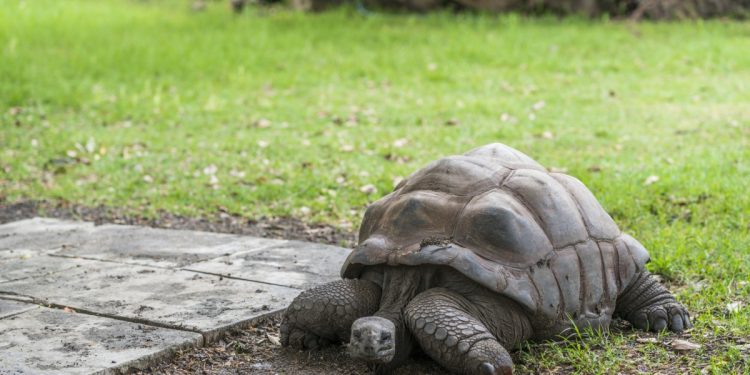What illnesses are tortoises likely to suffer from in captivity? By what symptoms can we recognize them and what should be done when the reptile falls ill? Answers in this guide.
Despite a fairly significant longevity, your turtle can also become ill during its lifetime. In the majority of cases, the disease comes from a poor diet, unsuitable environmental conditions or a malaise causing stress and anxiety. The solutions are often right under your nose. However, some diseases must be treated quickly or risk causing your turtle to die.
How to recognize a sick turtle?
When sick, your turtle will show many of the following symptoms:
Lethargy
weight loss
lack of appetite
Eye swelling
Cough
Sneezing
Diarrhea
Shell stains
Lumps under his skin
In any case, you must quickly consult a veterinarian specializing in reptiles and in particular turtles.
Anorexia
Your turtle may not eat at all. This is particularly the case during a sudden change in its environment: loss of a congener, modification of its enclosure, its eating habits. Appetite also decreases in the pre-hibernation phase. When hibernating, your turtle loses between 10 and 15% of its total weight. However, also check the level of humidity and good ventilation, otherwise it will affect its airways and prevent it from eating properly.
Eye problems
Your turtle’s eyes are particularly sensitive. Thus, they can present swellings and be the target of a bacterium. Often, the cause is found in vitamin A deficiencies. It is also the fault, sometimes, of too salty water in which it gets wet. Your veterinarian will prescribe a saline solution to be applied several times a day. He can also give drug treatment with antibiotics if necessary, or vitamin A supplements.
Diarrhea
Your turtle’s diarrhea comes from a poor diet. You may have given him too many vegetables or too many fruits, or even the wrong foods. It can also be infected with a virus or bacteria. This is especially serious since she can become dehydrated quickly. Thus, you must take him directly to your veterinarian.
respiratory infections
Your turtle will present, in the case of respiratory infections, nasal secretions, a state of lethargy, loss of appetite and difficult breathing through the mouth. This can come from rhinitis, which is legion in your tortoise. Virus or bacteria can be the cause. It can deviate into a particularly serious pneumonia in a reptile. Take her to your veterinarian immediately.
Illness in the shell
Your turtle may suffer from osteofibrosis, linked to a calcium or fiber deficiency. She will be subject to multiple fractures and a deformation of her shell. In addition, your turtle can be affected by:
Ulcerative shell disease of aquatic turtles linked to the bacterium Citrobacter Aeromonas.
Picornavirus which, in juvenile turtles, can soften their shell.
Dystocia
As in the iguana, your turtle can retain eggs, called dystocia. The factors are multiple: stress, malnutrition, environment, mechanical cause, anatomical… Your veterinarian will carry out an X-ray examination. It can provide both medical and surgical treatment.
Moisture dermatitis
If your turtle lives in an environment that is too humid, it may develop small blisters on its shell. This can lead to infections and loss of scales without proper treatment. Your veterinarian will prescribe what it takes to stop this process. You will also need to review the humidity level.
Read also: Care and hygiene for a turtle
Parasitic diseases
Ticks and myiasis can disrupt your turtle’s life. The first must be removed with a tick when you have located them. The seconds must necessarily be treated surgically by your veterinarian, because they infect the tissues.
Stomatitis
It affects many reptiles. In your turtle, this manifests as an infection of the mouth or mouth area. Prompt treatment should be provided. Without it, his face could be deformed. Importantly, during stomatitis, pain can prevent your turtle from feeding properly, resulting in de facto weight loss.












